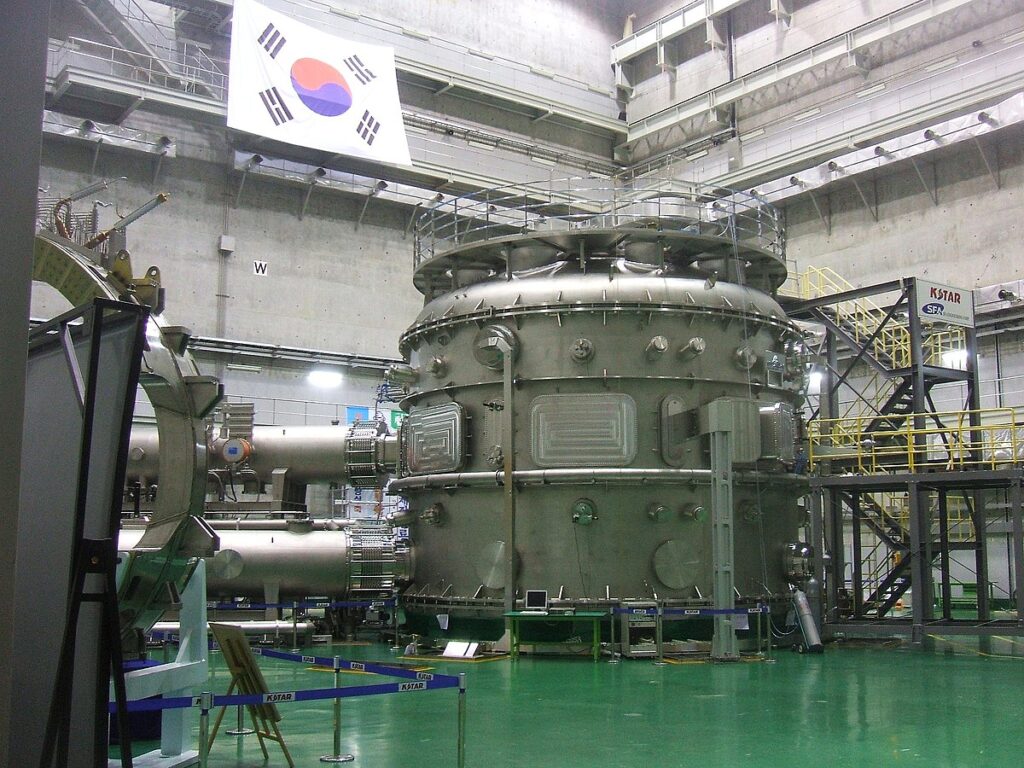
The KSTAR machine, also known as the Korean Superconducting Tokamak (artificial sun) a scientific achievement designed and built in South Korea. It’s a large toroidal fusion device, considered to be a major step towards the development of commercially viable nuclear fusion power, the same process that powers the sun.
South Korea’s cutting-edge technology has made headlines again as its ‘artificial Sun,’ the Korea Superconducting Tokamak Advanced Research (KSTAR), has achieved a remarkable milestone in nuclear fusion. During the latest plasma campaign from December 2023 to February 2024, KSTAR maintained its plasma at a scorching temperature of 100 million degrees Celsius for a groundbreaking 48 seconds, according to the Korea Institute of Fusion Energy (KFE).
This achievement is significant because it’s seven times hotter than the core of the actual Sun, which blazes at 15 million degrees Celsius. Throughout the three-month campaign, KSTAR surpassed all previous records in high-temperature and high-performance operations, requiring the replacement of several components.
Dr. Han Hyun-seon led the campaign and oversaw the operation to achieve and sustain the artificial Sun’s temperature. KSTAR previously hit a milestone in December 2016 by reaching 50 million degrees Celsius for 70 seconds and in December 2020 by sustaining 100 million degrees Celsius for 20 seconds.

Nuclear fusion, the process where light atomic nuclei merge to form heavier ones, releasing vast amounts of energy, is the same process that powers the Sun. This breakthrough holds immense promise for humanity as a clean energy source for the future. In 2022, US scientists achieved a net energy gain from a nuclear fusion reaction for the first time, marking a significant step forward in fusion energy research.
Construction of KSTAR began in 1995 and it achieved its first plasma in 2008. The machine is a tokamak, which uses powerful magnetic fields to confine hot plasma within a toroidal (doughnut-shaped) chamber.
KSTAR is a collaborative effort between several South Korean research institutions, led by the Korea Institute of Fusion Energy (KFE). The success of KSTAR has helped to solidify South Korea’s position as a leader in fusion energy research.

Other Countries Are Also Trying
China also boasts its own artificial Sun, the experimental advanced superconducting tokamak (EAST). In April 2023, EAST achieved a milestone in steady-state high confinement plasma operation for 403 seconds, surpassing its previous record of 101 seconds set in 2017. However, this breakthrough in plasma confinement, essential for fusion reactions, brings us closer to realizing the potential of nuclear fusion as a sustainable energy solution.


[…] Also See: South Korea Creates Super Hot ‘Artificial Sun’ for Energy […]
[…] Also See: South Korea Creates Super Hot ‘Artificial Sun’ for Energy […]